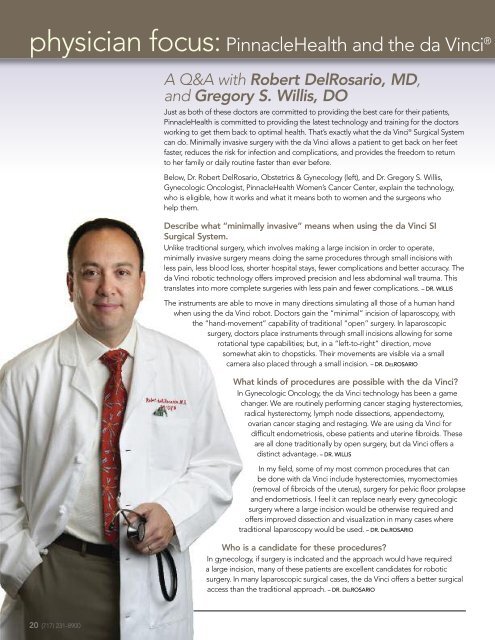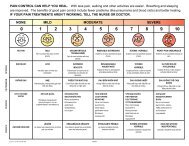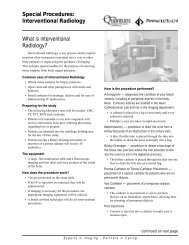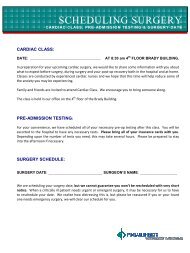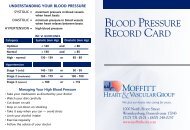Mary McCurdy - PinnacleHealth
Mary McCurdy - PinnacleHealth
Mary McCurdy - PinnacleHealth
You also want an ePaper? Increase the reach of your titles
YUMPU automatically turns print PDFs into web optimized ePapers that Google loves.
physician focus:<br />
<strong>PinnacleHealth</strong> and the da Vinci ®<br />
A Q&A with Robert DelRosario, MD,<br />
and Gregory S. Willis, DO<br />
Just as both of these doctors are committed to providing the best care for their patients,<br />
<strong>PinnacleHealth</strong> is committed to providing the latest technology and training for the doctors<br />
working to get them back to optimal health. That’s exactly what the da Vinci ® Surgical System<br />
can do. Minimally invasive surgery with the da Vinci allows a patient to get back on her feet<br />
faster, reduces the risk for infection and complications, and provides the freedom to return<br />
to her family or daily routine faster than ever before.<br />
Below, Dr. Robert DelRosario, Obstetrics & Gynecology (left), and Dr. Gregory S. Willis,<br />
Gynecologic Oncologist, <strong>PinnacleHealth</strong> Women’s Cancer Center, explain the technology,<br />
who is eligible, how it works and what it means both to women and the surgeons who<br />
help them.<br />
Describe what “minimally invasive” means when using the da Vinci SI<br />
Surgical System.<br />
Unlike traditional surgery, which involves making a large incision in order to operate,<br />
minimally invasive surgery means doing the same procedures through small incisions with<br />
less pain, less blood loss, shorter hospital stays, fewer complications and better accuracy. The<br />
da Vinci robotic technology offers improved precision and less abdominal wall trauma. This<br />
translates into more complete surgeries with less pain and fewer complications. – DR. WILLIS<br />
The instruments are able to move in many directions simulating all those of a human hand<br />
when using the da Vinci robot. Doctors gain the “minimal” incision of laparoscopy, with<br />
the “hand-movement” capability of traditional “open” surgery. In laparoscopic<br />
surgery, doctors place instruments through small incisions allowing for some<br />
rotational type capabilities; but, in a “left-to-right” direction, move<br />
somewhat akin to chopsticks. Their movements are visible via a small<br />
camera also placed through a small incision. – DR. DELROSARIO<br />
What kinds of procedures are possible with the da Vinci<br />
In Gynecologic Oncology, the da Vinci technology has been a game<br />
changer. We are routinely performing cancer staging hysterectomies,<br />
radical hysterectomy, lymph node dissections, appendectomy,<br />
ovarian cancer staging and restaging. We are using da Vinci for<br />
difficult endometriosis, obese patients and uterine fibroids. These<br />
are all done traditionally by open surgery, but da Vinci offers a<br />
distinct advantage. – DR. WILLIS<br />
In my field, some of my most common procedures that can<br />
be done with da Vinci include hysterectomies, myomectomies<br />
(removal of fibroids of the uterus), surgery for pelvic floor prolapse<br />
and endometriosis. I feel it can replace nearly every gynecologic<br />
surgery where a large incision would be otherwise required and<br />
offers improved dissection and visualization in many cases where<br />
traditional laparoscopy would be used. – DR. DELROSARIO<br />
Who is a candidate for these procedures<br />
In gynecology, if surgery is indicated and the approach would have required<br />
a large incision, many of these patients are excellent candidates for robotic<br />
surgery. In many laparoscopic surgical cases, the da Vinci offers a better surgical<br />
access than the traditional approach. – DR. DELROSARIO<br />
20 (717) 231-8900


